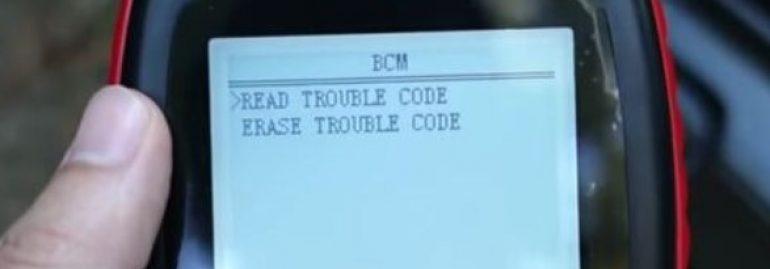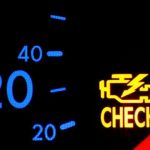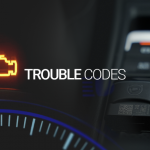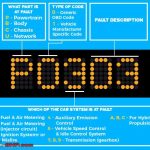There are many reasons your car may have engine DTC codes. Some are manufacturer-specific and may not have anything to do with emissions. However, these codes can still be useful to troubleshoot a problem. Here is a brief look at some of the most common ones. Learn about their meaning and characteristics below. You can also refer to the manufacturer’s manual to determine the specific cause of your car’s problem.
OBD-II fault codes
In addition to warning you of potential problems, OBD-II fault codes can also be used to diagnose air-conditioning failures. The air conditioning system of your vehicle is responsible for keeping the interior cool, so OBD-II fault codes can indicate problems with the compressor. These warnings can be helpful to both you and your mechanic. However, it is important to understand the different kinds of OBD-II fault codes, and how to read them.
The first three digits of an OBD-II code are a generic code assigned by SAE, the manufacturer of the car. The last three digits are specific to that particular vehicle model. The OBD-II fault codes monitor various systems and circuits in your car, including the fuel and air ratio. Other codes monitor emissions and fuel economy, while the misfire code indicates the same failure in all vehicles.
Unlike the MIL light, OBD-II fault codes can be used to diagnose a wide variety of problems, including fuel vapor leaks and evaporative emissions. These problems may not affect the driveability or performance of your car, but they are technically violations of emissions standards. To repair this, you need to identify the problem and fix it before the MIL light comes on. If the OBD-II fault codes aren’t the cause of the problem, it’s time for a mechanic to take the vehicle to a mechanic.
Most newer vehicles have a standard OBD-II diagnostic connector. Most newer cars have the same connector, but some older models have different hardware or software. Therefore, to read OBD-II fault codes, you need to buy a new OBD-II scan tool or upgrade your current one. You can also check your car’s owners manual to find the proper connector. If you don’t know where your OBD-II diagnostic connector is, you can find it by searching online.
Common engine dtc codes
If you have ever wondered about the common engine DTC codes, you are not alone. Millions of drivers are afflicted with these codes, and fortunately, these codes can help you identify the exact malfunction of your vehicle. By understanding the information they contain, mechanics can easily troubleshoot the problem and repair it. Listed below are some of the most common engine DTC codes and how to interpret them.
P0128: This code indicates a problem with the catalytic converter, which converts harmful combustion byproducts into CO2, water, and nitrogen. All modern cars have one or more catalytic converters. These converters are monitored by the PCM via oxygen sensors. If bank one of the converters does not clean gases as efficiently as the other two, the PCM will trigger the check engine light. If the catalytic converter is causing the issue, the car’s PCM will store the P0420 code in memory.
Codes with the first digit, “0”, or “1”, are global or generic. These codes apply to most vehicles, although manufacturers often add extra information to them. The second digit, “1,” is manufacturer specific. These codes are unique to a manufacturer and may require additional diagnostic information. The “MIL” is a generic warning code and will not illuminate when the car is experiencing overheating or low oil pressure.
Failures in non-powertrain systems can be retrieved through the OBDII diagnostic link connector. While they don’t illuminate the Check Engine Light, they are not involved with NYVIP2 emissions inspections. They are also referred to as pending or maturing codes. They are indicative of a malfunction that requires two consecutive warm-up cycles. If the issue is not resolved in this manner, the dispatcher can send another vehicle to take over the load.
Meaning of a dtc code
DTCs, or Diagnostic Trouble Codes, are codes that your car’s on-board diagnostics system generates to determine if your vehicle is having problems. These codes are displayed as an easily-understandable visible warning on your car’s dashboard. They also allow other external devices to interact with your vehicle to determine what is causing the problem. The first digit of a DTC is called the green digit and is the first character of the code.
The P0128 code is one example of a DTC. This code indicates that the engine coolant temperature is below the thermostat that controls the temperature. This code isn’t specific to any one manufacturer, but it’s widely accepted and can be interpreted according to SAE definitions. If you notice the P0128 code on your vehicle’s dashboard, you may have a fuel and air metering subsystem problem.
A DTC is the most common way to identify a problem with your vehicle. These codes contain diagnostic information about the malfunctioning components in your vehicle. Once you’ve determined what component is malfunctioning, you can work to find a solution. This is particularly helpful when your car won’t drive properly. It’s important to understand the DTC codes before making repairs. So, if you see one on your dashboard, make sure to consult your mechanic immediately.
The first digit of the trouble code tells you whether or not it’s a generic code or a manufacturer-specific code. Generic codes refer to general problems, while manufacturer-specific codes are specific to your vehicle. Generally, your mechanic will diagnose and fix a problem with a generic code. The generic codes will not work for your specific vehicle, but they will allow you to determine the root cause of your vehicle’s problems.
Characteristics of a dtc code
DTC stands for Diagnostic Trouble Code and is written as a series of hexadecimal numbers beginning with “0”. It then includes a first letter, followed by two consecutive digits. Typically, the first three digits are purple and correspond to a sequentially incremented number. There are also sub-families within the P family, including A, B, and C, which refer to hybrid propulsion systems.
The first two digits of an engine dtc code are a generic code, which is applicable to all vehicles. The fourth digit and the fifth character are manufacturer specific. These codes relate to the extra features on the vehicle, and must be addressed by the manufacturer. Listed below are characteristics of an engine dtc code:
DTC codes have a five-character format. Each character represents a different system. To decipher a code, you must first identify which system it pertains to. Common codes are generated for regulation requirements. In addition, thousands of unique codes are created for the various features found on different vehicles. This system makes it difficult to read all codes, so DTC code readers must be able to identify the specific problem.
A DTC code may mean any of the following: dirty air or a faulty MAF sensor. The air/fuel mixture in the car can also be contaminated, leading to a malfunctioned engine. Another common engine dtc code is P0462, which refers to a malfunction with the fuel-level sensor. A dirty MAF sensor can lead to problems with fuel-trim adjustment and fuel mixture.
How to read a dtc code
A diagnostic trouble code is a specific code that tells your car what the problem is with your engine. These codes are composed of a series of numbers and letters that indicate various problems with your engine. They can also refer to specific faults in your car.
A diagnostic trouble code is usually a five-digit number, like P0030. The first two digits of the code are generic, while the third character is the specific fault index. A malfunction in the power train control module can be caused by a number of issues, from a simple warning light to a total failure of the engine.
A diagnostic connector is necessary to read engine DTC codes. It is typically found underneath the driver’s side dashboard, near the pedals. Using a diagnostic scanner can help you determine which problem is causing the code to appear. You can also refer to the car’s owner manual to determine the correct diagnostic connector to use. However, you should know that not all scanners have this connector. It may take a little practice to find it.
DTC codes are standardized. If you have a car that is built after 1996, it’s most likely to be OBD-II or J1939 compliant. OBD-II diagnostic codes are five characters long, starting with a letter indicating the fault. The first digit is the green digit, and it tells the technician whether the code is generic or not.
If you have a telematics system, you can use your car’s DTC to contact your dispatcher and let them know what’s going on with your car. They can help you with any problem as well as dispatch a new vehicle or send another one to take the load. And remember: even if you’re not a mechanic, a good diagnostic tool can save your car’s life.






